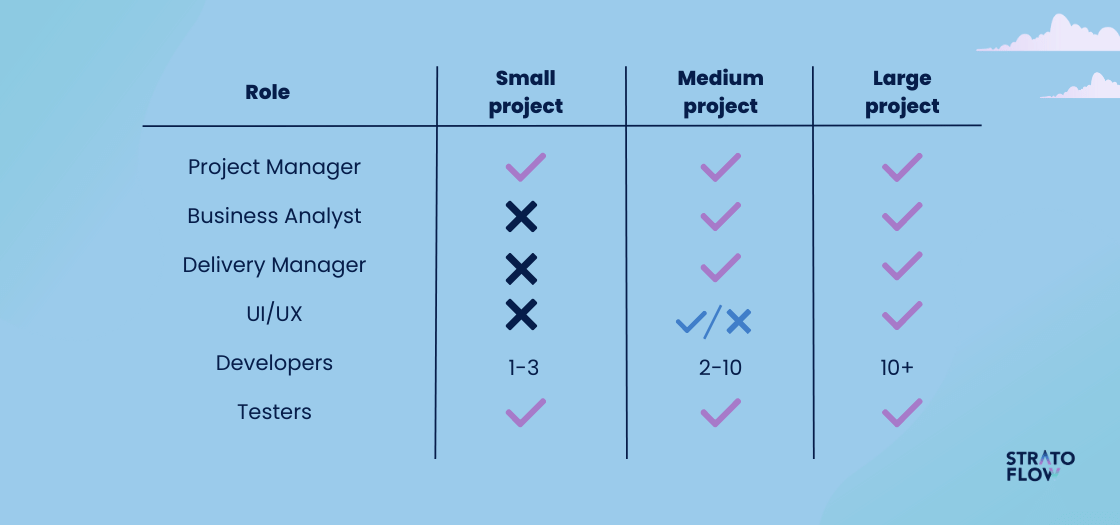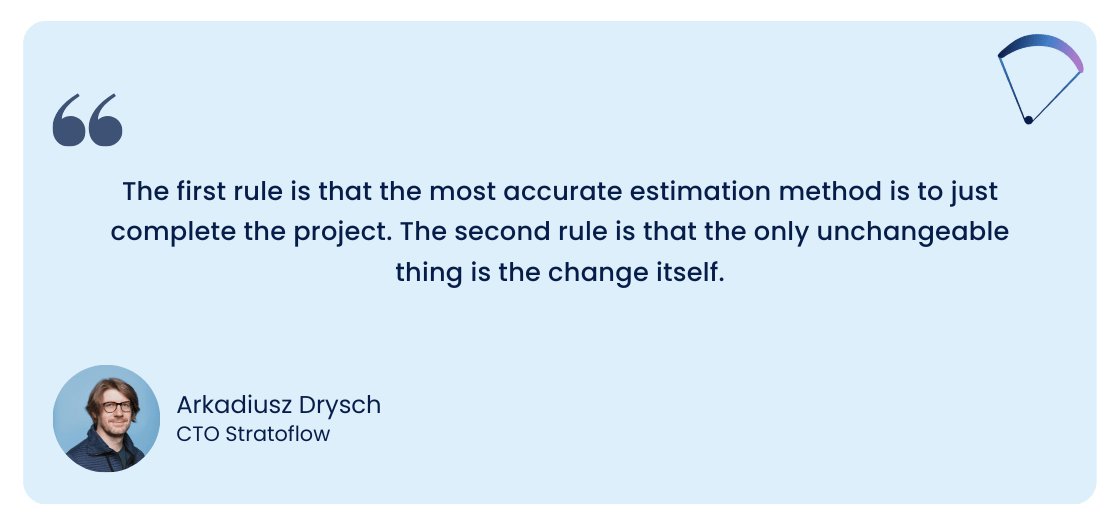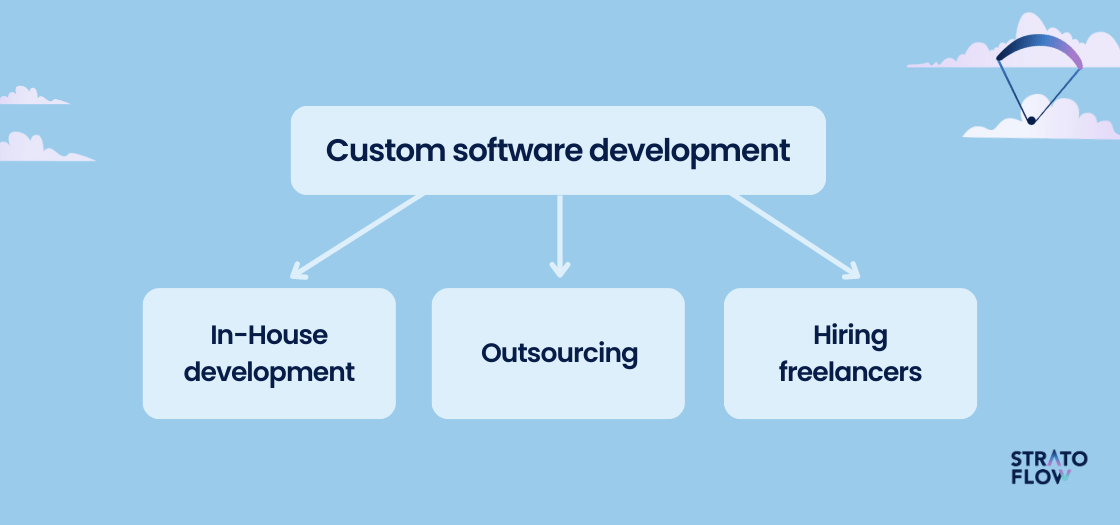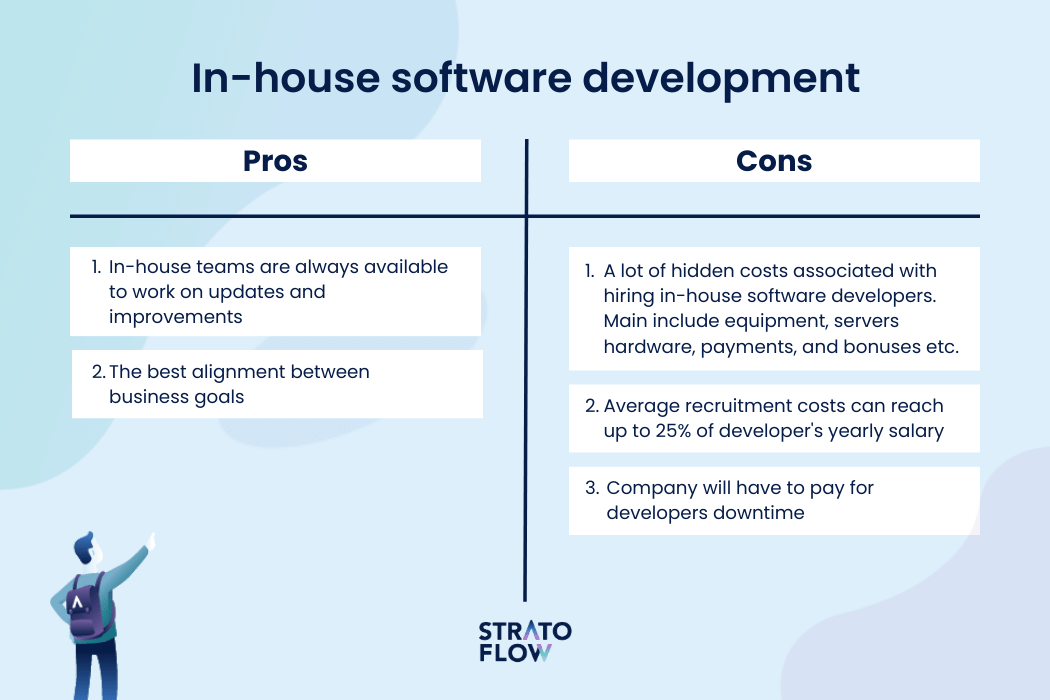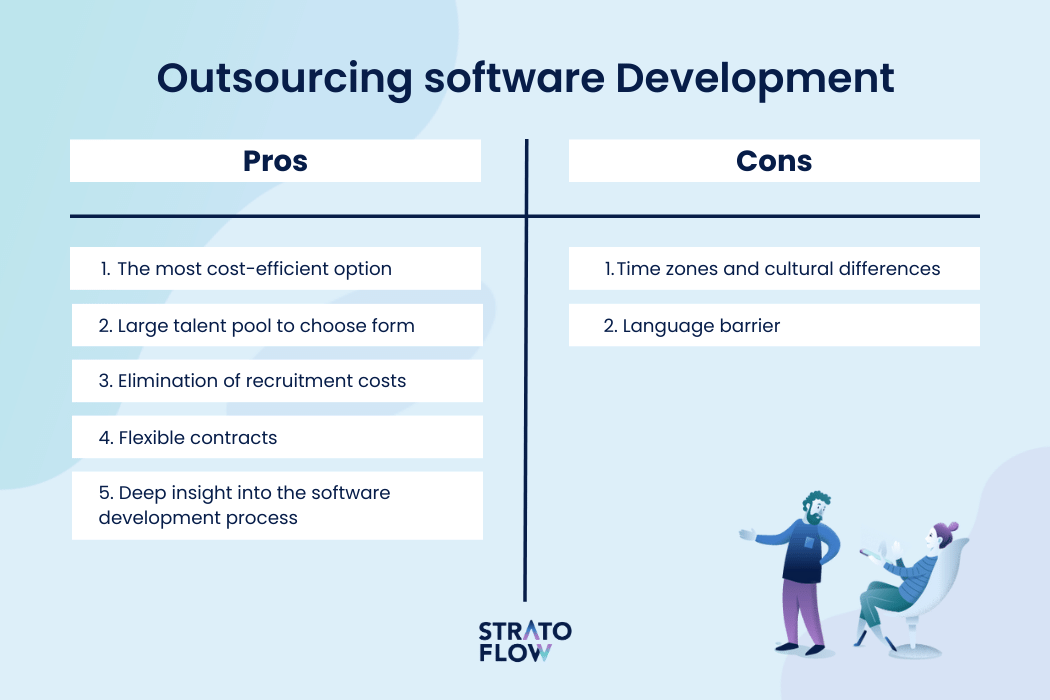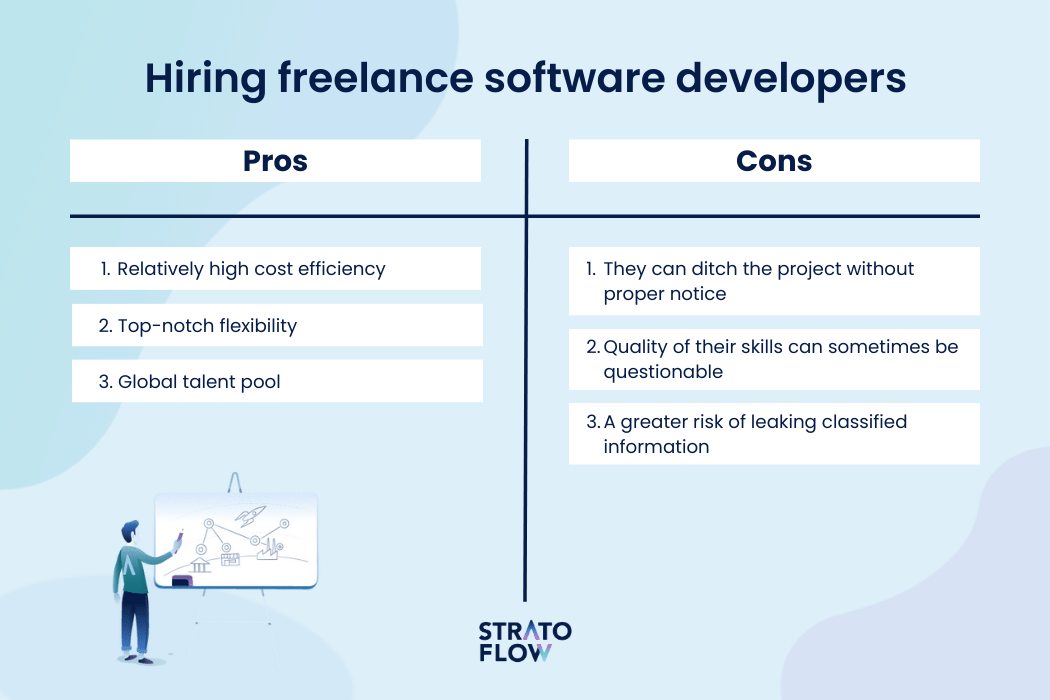
How to Estimate the Cost of Software Development [Experts Insights]
Have you ever wondered what it takes to build an app like Tinder, Spotify, Uber, or Slack?
Maybe you have your own idea for a breakthrough software application, but don’t know where to start.
This article will answer all of your questions.
We will delve deep into the key considerations and best practices for estimating the cost of software development projects, providing insights and guidance for organizations and individuals embarking on a software development project.
It is a must-read for business executives, online entrepreneurs, as well as senior programmers seeking a deeper understanding of the software development process.
Contents
- What is custom software development?
- The average cost of software development
- Software development cost breakdown
- How to estimate software development cost
- Estimating software development costs – four basic steps
- How to reduce the custom software development cost?
- Sourcing methods for software development projects
- Software development hidden costs
What is custom software development?
Let’s start with the basics and define what the software development process really encompasses.
Custom software development refers to the process of creating software applications or systems that are specifically designed and developed to meet the unique needs, requirements, and objectives of a particular organization or individual.
It involves tailoring the custom software solution to the specific workflows, processes, and functionalities required by the client, rather than using off-the-shelf software that may not fully meet their unique needs.
Organizations or individuals may choose custom software development when they need a software solution that cannot be met by existing off-the-shelf software, or when they want to introduce a breakthrough product with specific features, functionalities, or workflows.
Custom software development allows for greater flexibility, customization, and control over the software solution, but it may also require more time, effort, and cost compared to using pre-built software solutions.
The average cost of software development
So we know what we are dealing with, but how much does it really cost?
The answer to this question is much more difficult, as no two development projects are really the same.
Small software development projects, such as simple mobile apps or basic websites, may have a lower average cost, ranging from a few thousand to a few tens of thousands of dollars. It all depends on the scope of the project and the desired features.
Mid-sized software development projects, such as larger enterprise applications or custom software solutions, can have average costs ranging from tens of thousands to hundreds of thousands of dollars.
Large software development projects, such as complex enterprise ERP systems, large-scale software solutions, and social media platforms, can have average costs ranging from hundreds of thousands of dollars to six-figure sums and more.
These numbers are only a general indication of what to expect for various projects, as software development costs can be greatly influenced by a number of factors. All of which make accurate pricing a challenging task.
To get a better idea of general development costs, let’s estimate the software development costs of building some sample applications.
[Read also: How to Find and Hire Full Stack Developers in 2024: Guide + Best Practices]
Sample projects and their costs
Simple Proof of Concept Applications
Size of project – Small
Time frame – 4-8 weeks
Estimated cost – $25k-$35k
Commercial web applications
Size of project – Medium
Time Frame – 4 Months
Cost – $60k-$100k
Enterprise applications
Size of project – Large
Time Frame – 8 Months or more
Cost – $150k and more
[Read more: Benefits of Open Source Software for Developers, Managers and Business]
Software development cost breakdown
We’ve already known that developing a brand-new software application from the ground up is a rather costly endeavor. The questions now probably arise: what really goes into that sum? Does it have to be that expensive?
Let’s now break down the main factors influencing the overall cost of each project.
Software complexity
The complexity of the custom software project is one of the most important factors influencing the cost of development.
First and foremost, we should ask ourselves the key question: is what we want to build even possible?
In 90% of cases, such as simple social media platforms, online store websites, API integrations, the answer will be yes. After all, the global IT market is approaching full maturity and there are not many things left to discover or improve.
But there are some notable exceptions. Sometimes your idea can be truly revolutionary and there is no other product on the market with the same capabilities.
In such situations, we look at R&D projects. These projects are usually more expensive because they require the best talent, and they are harder to estimate since you are really venturing into the unknown. Perhaps most importantly, R&D projects don’t guarantee success.
However, when it comes to the more common but complex development processes, the aspect of project complexity encompasses several factors. Some of them include the number and difficulty of features required, as well as the degree of customization of the application. The relationship is quite simple – the more features you want to include in your product, the higher the final price tag will be.
How do you calculate the approximate cost of software development based on complexity?
You can break your projects into smaller chunks, such as individual functionalities, and estimate how long it would take a single programmer to develop them. For example, a basic email signup feature would take 20 hours to set up, additional social media integration would take another 20 hours of programmer work, and so on.
The number of features and a rough estimate of project complexity should be based on thorough market research conducted during the discovery phase. Without a deep understanding of the target audience, it will be difficult or even impossible to determine which features are truly essential.
Size and type of the project
The cost of custom software development costs can be greatly influenced by the sheer complexity of the development project.
As you may have guessed, the number and complexity of the features and functionality required have a direct impact on the overall cost of development. The more features you add, the more development time they require and the higher the cost.
The other factor is the nature of the project itself.
What do we mean by that? Let’s say you are developing an online store website. It would be pretty easy to find software developers familiar with this type of project. It has been done hundreds of times in the past, and on top of that, there are plenty of ready-made tools and integrations to help you along the way.
But if your goal is to build a custom accounting system where high-performance is a top priority, the story changes. You need highly experienced IT professionals who understand complex logic and convoluted business-specific nomenclature.
There’s also the issue of variability in requirements.
If you’re building a product that’s subject to external influences, such as changes in financial regulations, there’s a need for constant updates and rework. This increases the cost of development, especially in the long term.
Software development team size and expertise
Another of the key software development cost factors is the size and expertise of the development team.
This point is somewhat related to the previous one, as hiring a larger project team with specialized skills and expertise can result in higher costs. This issue goes a bit deeper than that.
If you are working on something smaller, such as integrating payment gateways into your online store, you can get away with a single freelance developer. Here, the cost issue is relatively straightforward – the developer gives you their hourly rate, and you agree on the timeframe for the project. For larger software development projects, the story is a bit more complicated.
Any major software development project requires at least three key roles – a project manager or product owner, a developer, and a QA tester. The product owner is responsible for defining and prioritizing the product backlog and aligning the product vision with customer needs and business goals. The programmers and QA testers, on the other hand, move the product through the next phases of the development project. The larger the project, the greater the need for people in support roles to improve communication between stakeholders and development teams.
Type of platform
There’s also the choice of development platform.
Different platforms, such as web, mobile, desktop, or embedded, can have different development requirements, levels of difficulty, and associated costs.
When developing a mobile or desktop application, you can choose between two approaches that can influence the overall cost of the development project – cross-platform or native.
Cross-platform development uses frameworks, tools, or technologies that allow developers to write code once and deploy it across multiple platforms, such as desktops, mobile devices, or multiple operating systems.
Native software development, on the other hand, involves developing separate versions of the application for each target platform (e.g., Windows, macOS, iOS, Android) using platform-specific programming languages, libraries, and tools.
While cross-platform development offers benefits in terms of code reusability, cost efficiency, and faster deployment, it can have limitations in terms of access to platform-specific features, performance, and design flexibility.
If your product is a SaaS or Web-based application, the difference isn’t as important. Most modern programming languages, such as Java, are platform-independent, which means they run just as fine on any device. In other words, you can create a web application that will run on any operating system – Windows, Linux, or MacOS.
How to estimate software development cost
Software development cost estimation is one of the most difficult tasks for every software project, as there’s no single, universal framework for estimating the development cost. Each project is different, and a seemingly similar development job can generate vastly different costs for a myriad of reasons.
Arkadiusz Drysch, Stratoflow CTO, has rather jokingly said that:
“The first rule is that the most accurate estimation method is to just complete the project.
The second rule is that the only unchangeable thing is the change itself.”
One thing is for sure – the more time spent analyzing and establishing preliminary assumptions, the more accurate the estimate will be.
Four rules of software project estimation
Arkadiusz has also shared some of the principles of project estimation that all stakeholders should remember when beginning a new software initiative.
1. Feasibility first, estimation second
Software development companies cannot provide an accurate project estimate without knowing that the client’s vision is even feasible. If not, you are dealing with an R&D project and that is a completely different story.
In easier projects, a so-called proof-of-concept (PoC) or minimum viable product (MVP) is done, which is basically a throwaway project, which confirms whether something is possible. It is prepared with a much smaller budget, usually with some kind of time limit, and is supposed to prove the basic feasibility of the project before the main estimation can even begin.
2. Get professional help
Software costing estimation is by all means not an easy feat.
In many cases, it will be necessary to hire a dedicated business analyst to help translate business needs into technical requirements. If so, remember to include them in the main project budget.
3. Extrapolation is the way to go
Any development project can be broken down into smaller tasks, often of similar difficulty.
A good practice for estimating software development projects is to use the power of extrapolation – choose a few tasks that are representative in terms of difficulty, estimate how much time and effort they will require, and then multiply that by the number of tasks to be performed.
4. Preliminary assumptions are absolutely essential
The analysis phase of an enterprise software project is essentially invaluable.
Why is that? Wouldn’t it be better to focus on programming rather than pure conceptual work?
Initial assumptions are critical in shaping the future of the finished software product, especially with regard to future changes and flexibility.
If we make too few assumptions about what parts of the software can be “hard coded” – the system will be “too flexible”. Programmers will spend way too much work making it flexible and scalable when it’s just not necessary. Make too many assumptions about immutability and you will end up with an inflexible system that will require major rework in a few short years to meet new business reality.
Long story short, a lack of thoughtful upfront assumptions will inevitably lead to poor resource management and cost overruns.
[Read also: How to Hire Dedicated Developers – Your Ultimate Guide]

Estimating software development costs – four basic steps
Even though, as we’ve said, each development project is different and there’s no single universal approach to estimating software development price we can do our best and point out four key steps that all business executives should consider.
1. Determine the level of complexity of the project
First things first – how difficult will the project be? Is it even feasible, or will it be an R&D job? Will the whole system have to be built manually from scratch, or can some off-the-shelf components or APIs be used?
2. Choose the right technology stack
Next, you need to choose the appropriate technology stack for the project, including programming languages, frameworks, libraries, databases, and other tools.
Ask yourself questions like: What software features are really important to me? Is scalability or performance the top priority? Or maybe both? Then you can choose the right tech stack for the job accordingly.
3. Estimate the size of the software
You should define the scope of the project as clearly as possible, including the features, functionality, and deliverables to be developed.
Agile development methodologies often use story points as a measure of project scope. It is a relative measure of the effort required to develop specific features. The team assigns points to each user story (software feature) based on its complexity, effort, and risk. The total number of points for all user stories in the project is then used as a measure of project size.
4. Consider Timeframes
Then you need to estimate the time required for each task and when you plan to release your product. Consider any dependencies, risks, or constraints that may affect the development schedule and adjust the cost estimate accordingly.
Timeframes have a direct impact on the overall cost of the software, as you can have a larger development team that will complete the given task twice as fast, but it will also be more expensive. It is also very important to take into consideration tasks such as testing, documentation writing, and other additional activities apart from the development itself.
How to reduce the custom software development cost?
Reducing the cost of software creation is a common goal for many organizations and individuals seeking to optimize their budgets and resources. Here are three strategies that can consider when wanting to reduce the cost of software development:
Consider low-code and no-code development approaches
Low-code (LCDP) and no-code development platforms (NCDP) are considered a new revolution in the IT market.
They provide pre-built components and drag-and-drop interfaces that allow developers to quickly create applications without writing extensive code from scratch. This greatly accelerates the development process and reduces the time and effort required to create complex software applications.
Low-code platforms like Openkoda guarantee speeding up the development process by up to 30% all while retaining full data ownership and letting developers build complex business logic with custom Java code.
Optimize development team size and location
The size and location of the development team have a direct effect on the overall costs of software development.
The larger the team is, the faster it can finish up its work, but it will also require larger budgets. There are also significant differences in hourly rates among developers in different countries.
Exploring outsourcing or offshoring options, where feasible, can potentially reduce costs while maintaining quality as many European nations possess vast IT talent pools and a good knowledge of the English language.
Collaborate and communicate effectively
Good communication in software projects is a key to success.
Effective collaboration between team members and stakeholders can prevent misunderstandings, delays, and rework that can impact costs. If you are working with an external development team, consider using collaborative tools and practices to streamline communication and coordination.
If you are building an application in-house, consider hiring someone in a delivery manager position to make sure everything goes according to plan. This will minimize inefficiencies and help you save a good chunk of your budget.
Sourcing methods for software development projects
When talking about costs of software development we should also cover different ways sourcing IT talent as we’ve already mentioned it a couple of times in this article.
In-house development team (insourcing)
The first approach is the most basic – in-house development.
In-house software development projects refer to the process of developing software or applications within an organization using the organization’s own internal resources, such as its own team of developers, designers, and other related personnel.
In an in-house software development project, the organization takes full ownership and control of the entire development process, from conceptualization and requirements gathering to design, development, testing, deployment, and maintenance.
There are also a few disadvantages to insourcing development that are worth mentioning. First and foremost, projects developed using this approach require a significant investment of time, effort, and resources, including skilled personnel, infrastructure, tools, and equipment. The main issue is sourcing the right programming talent within an organization and hiring people with the necessary technical background and knowledge. Organizations must carefully consider the costs, risks, and benefits associated with in-house software development projects before deciding to pursue this approach.
Outsourcing to software development company
A popular alternative to in-house software development is the outsourcing of IT services.
Outsourcing software development services is the practice of hiring external vendors or third-party software development companies to handle various aspects of the custom development process, including design, development, testing, deployment, and maintenance. There are generally two types of outsourcing of IT services – inshoring, i.e. choosing a service provider located domestically, nearshore and offshore, which means choosing a vendor located abroad.
The main reasons organizations choose to outsource software development include cost savings, access to specialized expertise, faster time to market, and flexibility in resource allocation.
By outsourcing, organizations can leverage the expertise and capabilities of external service providers, often at a lower cost compared to maintaining an in-house team. It is thus a win-win situation for both parties involved.
Hiring freelancers
The third popular option for developing software solutions is to hire freelancers.
Freelance software development refers to the practice of hiring individual software developers or development teams on a contract or project basis, rather than as full-time employees.
Freelance software development offers several advantages, including flexibility in resource allocation, access to specialized expertise, cost-effectiveness, and scalability.
However, there are also serious limitations associated with this employment model, such as managing remote teams, ensuring quality control, maintaining communication and coordination, and managing intellectual property rights. As a result, this form of outsourcing should be reserved for smaller projects.
[Read also: Introduction to IT staff augmentation]
Software development hidden costs
Alright, we’ve already covered the main factors influencing average software development costs, ways of optimizing the development process and hiring programmers, but this is not the end of the story.
There are also some hidden costs associated with software development that have to be mentioned.
Future software maintenance
Every IT system is a lot like a car.
What do we mean by that? Well, just like you have to fill up the gas tank, change the oil and change every once in a while, the software also has to be constantly maintained.
This is the part that many business owners forget. Of course, as we mentioned in the first part of this article, no two software projects are the same, and so some systems may require a lot more post-launch maintenance than others, but it’s still a significant cost to consider.
Scope creep
It’s rare that a software product is delivered in a form that is 100% true to the original assumptions. More often than not, programming projects evolve over time and space must be made for new functionalities. This situation is colloquially referred to as scope creep.
Scope creep is basically the tendency for the project scope to expand beyond the original requirements, resulting in additional work and cost. It can occur due to changes in business requirements, evolving stakeholder expectations, or inadequate initial scoping.
Budgets often don’t account for the time required to add extra features, so scope creep can be considered one of the major factors increasing hidden development costs.
Administrative stuff
Clients often think in terms of key functionalities – how fast can they get the product to market to start generating revenue?
They tend to forget about the administrative environment, which is also very important.
Things like creating proper project documentation and polishing application terms and conditions often fly under the radar when considering software development costs, yet they are essential to getting any software application to market.
Project management issues
Like it or not, every custom software development project will encounter some inefficiencies along the way.
Sometimes there are situations where the development team has nothing significant to do because they are waiting for analysts. Sometimes the testers are the ones waiting because the development team is still polishing some functionalities.
Situations like these are an unavoidable part of software development. Of course, you can reduce the impact of these delays somewhat by using agile methodologies, but some loss of efficiency is inevitable.
When estimating costs, analysts often don’t account for these inefficiencies, which can lead to budget overruns and missed deadlines even though they are no one’s fault.
[Read also: The Most Common Problems in Software Development]

How to estimate the cost of software development – closing thoughts
Estimating costs is an extremely tedious and complex task for which there is no universal formula. Each project must be carefully and individually analyzed, because the more time spent on the initial analysis, the more accurate the final estimate will be.
Related Posts
Thank you for taking the time to read our blog post!



